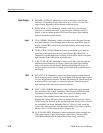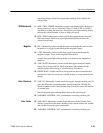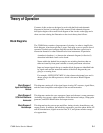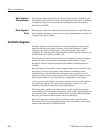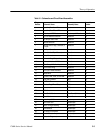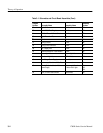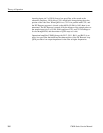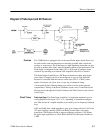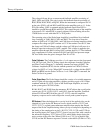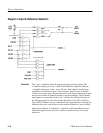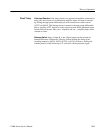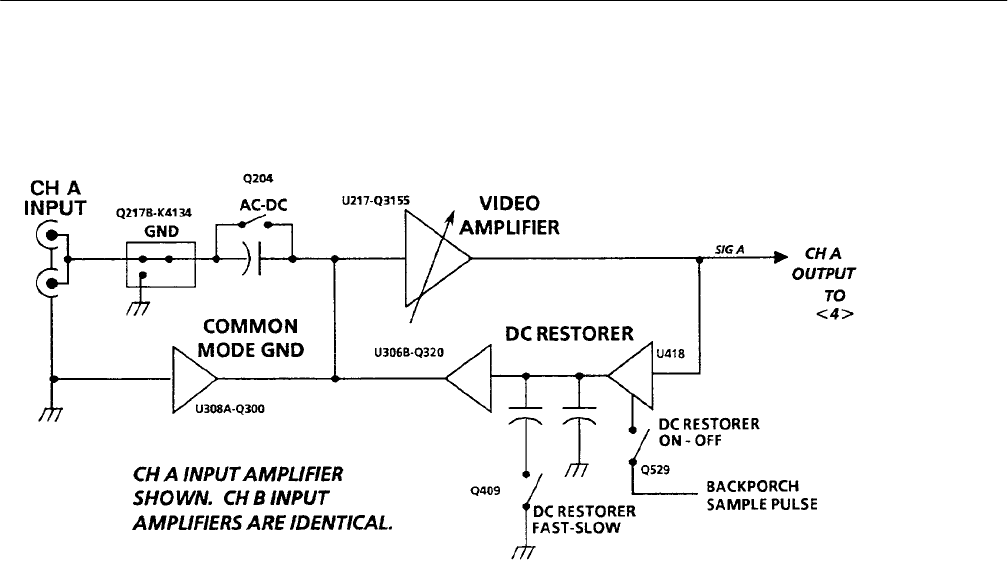
Theory of Operation
1780R-Series Service Manual
3–5
Diagrams 1 & 2 Input Amplifiers
The Input board contains four amplifiers that give the input signal gain, DC
restore it, and send it to the + and – Amplifiers. Since they are identical circuits,
only the operation of Channel A will be described.
Channel A Input. The input signal is connected to the loop-through BNC
connectors on the rear of the instrument. Inductors L116 and L115 provide good
return loss characteristics over the video bandwidth. Capacitor C206 AC couples
the signal to U217D, the amplifier input. FET Q204 shorts C206 for DC-coupled
operation. Relay K213 switches between the applied signal and the internal
ground reference, through R114.
Video Amplifier. Emitter coupled pair U217D and transistors Q315 and U217A
are connected as an operational amplifier with resistors R343 and the parallel
combination of R341 and R340 forming a noninverting gain of two topology.
U308A feeds any hum on the ground lead of the input BNC connectors to the
inverting input of the Video Amplifier. Because of this, hum that is common to
both the signal and ground connections is eliminated from the signal at the
output of the amplifier. This common mode feature is enabled when the screw
between the two BNCs, on the rear panel, is removed.
DC Restorer. Either the backporch or sync tip level of the applied video can be
clamped to 0 volts by the DC Restorer circuit, which consists of U418 and
U306B. U418 is a gated transconductance amplifier that samples the filtered
output of the Video Amplifier during either sync tip or backporch (depending on
the timing of the sample pulse at pin 5). R422, C541, L541, and C542 (at the
Overview
Circuit Theory



